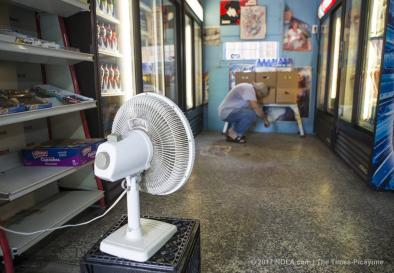Heavy downpours more intense, frequent in a warmer world

According to the 2009 National Climate Assessment, heavy downpours have increased in frequency and intensity during the last 50 years. Models predict that downpours will become still more more frequent and intense as greenhouse gas emissions and the planet’s temperature continue to rise.
The map (above) shows predicted changes in the annual number of days of extreme rainfall (defined as rainfall totals in excess of the historic 98th percentile) across the United States by 2041-2070 as compared to 1971-2000 if greenhouse gases continue to increase at a high rate (A2 scenario). By mid-century, some places could experience two or more additional days per year on which the rainfall totals exceed the heaviest rains historically experienced in the area.
Climate models project increasing days of extreme rainfall in the Northwest, Midwest, and parts of the Northeast, including some populated coastal areas that are already challenged by inundation and sea level rise. Several major watersheds are predicted to have more days of extreme rainfall by the middle of the century, including the Pacific Northwest, the Ohio River Basin, the Great Lakes, and parts of the Great River and Missouri River Basin. Meanwhile, the Southwest and some other areas frequented by drought are expected to see little difference in the number of extreme rainfall days.
One of the major findings of the 2009 assessment report—which will be updated in a new edition this coming spring—is that we’re already seeing increases in the amount of heavy precipitation in the United States, particularly in the Northeast and Midwest. The amount of rain falling in the heaviest downpours has increased approximately 20 percent on average in the past century.
Related Content






